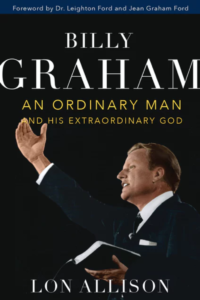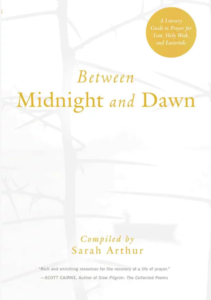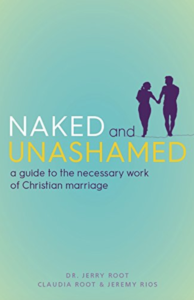Fed By Angels
By Ronald Rolheiser, OMI
Excerpt from God For Us
Celebration is a paradoxical thing. It lives within the tension between anticipation and fulfillment, longing and consummation, the ordinary and the special, work and play.
Seasons of play are sweeter when they follow seasons of work, seasons of consummation are heightened by seasons of longing, and seasons of intimacy grow out of seasons of solitude.
Presence depends upon absence, intimacy upon solitude, play upon work.
In liturgical terms, we fast before we feast.
In our time, we struggle with such paradoxes. Many of our feasts fall flat because there has not been a previous fast. In times past, there was generally a long fast leading up to a feast, and then a joyous celebration afterward.
Today, we have reversed that: there is a long celebration leading up to the feast and a fast afterward.
Take Christmas, for example. The season of Advent, in effect, kicks off the Christmas celebrations. The parties start, the decorations and lights go up, and the Christmas music begins to play. When Christmas finally arrives, we are already saturated and satiated with the delights of the season—we’re ready to move on. By Christmas Day, we are ready to go back to ordinary life. The Christmas season used to last until February. Now, realistically, it is over on December 25.
Celebration survives on contradiction. To feast, we must first fast. To come to real consummation, we must first live in longing. To taste specialness, we must first have a sense of what is ordinary.
When fasting, unfulfilled longing, and the ordinary rhythm of life are short-circuited, fatigue of the spirit, boredom, and disappointment invariably replace celebration and we are left with an empty feeling which asks: “Is that all?” But that is because we have short-circuited a process.
I am old enough to have known another time. Like our own, that time too had its faults, but it also had some strengths. One of its strengths was its belief—a lived belief—that feasting depends upon prior fasting.
I have clear memories of the Lenten seasons of my childhood. How strict that season was then! Fast and renunciation: no weddings, no dances, no parties, drinks and desserts only on Sundays, and generally less of everything that constitutes specialness and celebration. Churches were draped in purple. The colors were dark and the mood was penitential, but the feast that followed, Easter, was indeed special.
Lent. We know it is a season within which we are meant to fast, to intensify our longing, and to raise our spiritual temperatures, all through the crucible of non-fulfillment.
But how do we understand Lent?
Sometimes the etymology of a word can be helpful. Lent is derived from an old English word meaning springtime. In Latin, lente means slowly. Therefore, Lent points to the coming of spring, and it invites us to slow down our lives so as to be able to take stock of ourselves. While that captures some of the traditional meaning of Lent, the popular mindset generally has a different focus, looking at Lent mostly as a season within which we are asked to refrain from certain normal, healthy pleasures so as to better ready ourselves for the feast of Easter.
To further our understanding, perhaps the foremost image for this is the biblical idea of the desert. Jesus, we are told, in order to prepare for his public ministry, went voluntarily into the desert for forty days and forty nights, during which time he took no food, and, as the Gospel of Mark tells us, was put to the test by Satan, was with the wild animals, and was looked after by the angels.
Clearly this text is not to be taken literally to mean that for forty days Jesus took no food, but that he deprived himself of all the normal supports that protected him from feeling, full-force, his vulnerability, dependence, and need to surrender in deeper trust to God the Father. And in doing this, we are told, he found himself hungry and consequently vulnerable to temptations from the devil; but also, by that same token, he was more open to the Father.
Lent has for the most part been understood as a time of us to imitate this, to metaphorically spend forty days in the desert like Jesus, unprotected by normal nourishment so as to have to face “Satan” and the “wild animals” and see whether the “angels” will indeed come and look after us when we reach that point where we can no longer look after ourselves.
For us, Satan and wild animals refer particularly to the chaos inside of us that normally we either deny or simply refuse to face: our paranoia, our anger, our jealousies, our distance from others, our fantasies, our grandiosity, our addictions, our unresolved hurts, our sexual complexity, our incapacity to really pray, our faith doubts, and our dark secrets.
The normal “food” that we eat (distractions, busyness, entertainment, ordinary life) works to shield us from the deeper chaos that lurks beneath the surface of our lives.
Lent invites us to stop eating, so to speak, whatever protects us from having to face the desert that is inside of us. It invites us to feel our smallness, to feel our vulnerability, to feel our fears, and to open ourselves to the chaos of the desert so that we can finally give the angels a chance to feed us.
That is a rich biblical image for Lent, but human experience, anthropology, and our ancient myths offer their own testimony. For example, in every culture, there are ancient stories and myths that teach that all of us, at times, have to sit in the ashes. We all know, for example, the story of Cinderella. The name itself literally means, the little girl (puella) who sits in the ashes (cinders). The moral of the story is clear: before you get to be beautiful, before you get to marry the prince or princess, before you get to go to the great feast, you must first spend some lonely time in the ashes, humbled, smudged, tending to duty, unglamorous, waiting.
Lent is that season, a time to sit in the ashes. It is not incidental that many of us begin Lent by marking our foreheads with ashes.
There is also the rich image, found in some ancient mythologies, of letting our tears reconnect us with the flow of the water of life and of letting our tears reconnect us to the origins of life. Tears, as we know, are saltwater. That is not without deep significance. The oceans too are saltwater and, as we know too, all life takes its origins there.
And so we have the mystical and poetic idea that tears reconnect us to the origins of life, that tears regenerate us, that tears cleanse us in a life-giving way, and that tears deepen the soul by letting it literally taste the origins of life.
Given the truth of that (and we have all experienced that truth), tears too are a desert to be entered into as a Lenten practice, a vehicle to reach new depths of soul.
Lent. It is a season to slowly prepare our souls. It is a time to open ourselves to the presence of God in our lives and let the angels feed us. It is a time to sit among the ashes, confident that love will abound in due time. It is a time to be washed by our tears into the water of new life, to come to real transformation and newness ready to celebrate the feast that is given us at Easter. Read More.




